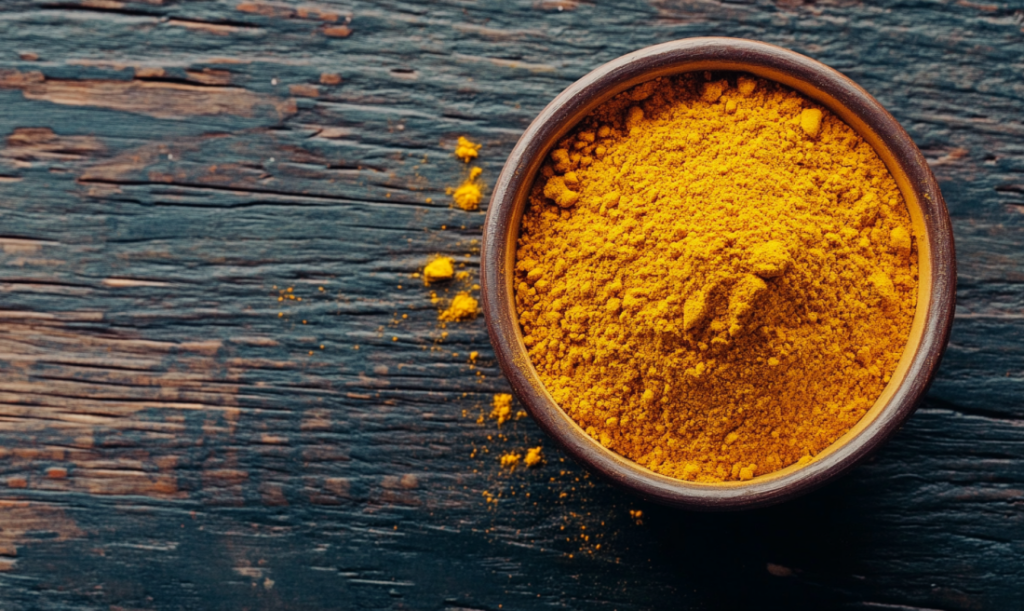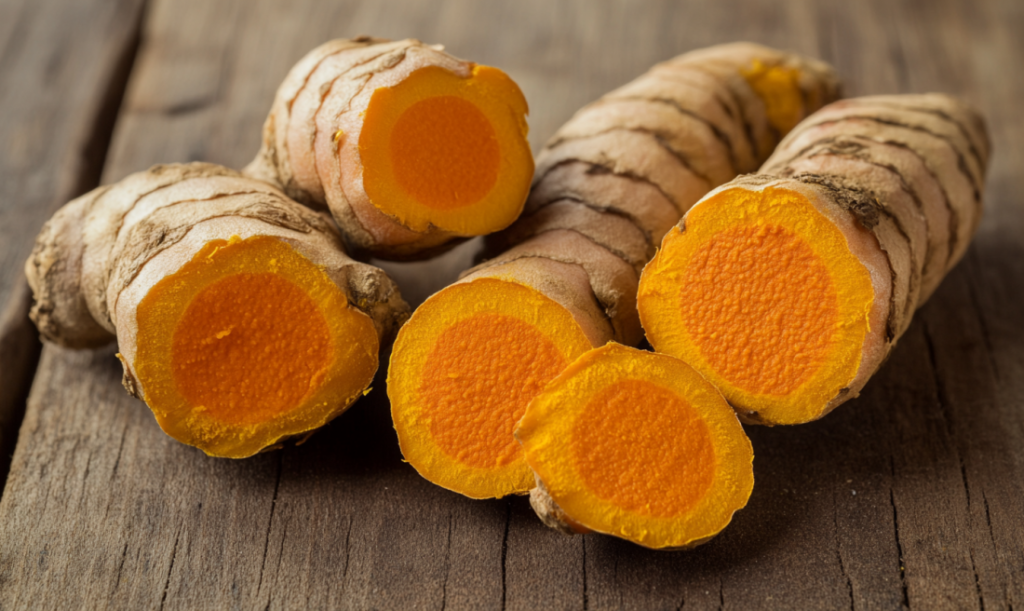E100 Code Introduction
E100, also known as Curcumin, is a natural yellow colorant derived from the root of the turmeric plant (C. longa). Widely used in the food industry, Curcumin imparts a vibrant yellow hue to a variety of products. In addition to its coloring properties, Curcumin is celebrated for its potential health benefits, including anti-inflammatory and antioxidant effects.
Usage in Food Products
Common Foods Containing E100
E100, or Curcumin, is widely used in a variety of food products. Its vibrant yellow color makes it a popular choice in many different types of foods, especially those where a natural colorant is preferred.
Dairy Products
Curcumin is commonly found in dairy products such as margarine, butter, and certain cheeses. These products use E100 to achieve a rich, yellow color that appeals to consumers. For instance, butter often contains Curcumin to enhance its natural yellow hue, which can vary depending on the cow’s diet.
Snacks and Condiments
In the snack food industry, E100 is used in products like chips and extruded snacks to provide a visually appealing yellow color. Additionally, Curcumin is a key ingredient in mustard, providing the classic yellow color that consumers expect. Mustard is one of the most recognizable examples of a condiment where E100 plays a crucial role.
Beverages and Sweets
Curcumin is also used in beverages, particularly in health drinks and teas where its natural properties are valued. In sweets, particularly in those marketed as natural or organic, E100 can be used to achieve the desired yellow color while maintaining the product’s health-conscious appeal.
Legal Status of E100
E100 is approved for use in food products by regulatory agencies worldwide, including the European Union (EU) and the United States Food and Drug Administration (FDA). In the EU, it is listed as an approved food additive under the code E100, and in the United States, it is classified as GRAS. The use of Curcumin is subject to maximum allowable limits, which vary by region and food type.
Is E100 banned in the USA?
No, E100 is not banned in the USA. It is recognized as GRAS (Generally Recognized As Safe) by the FDA and is widely used in food products.
Is E100 approved in Europe?
Yes, E100 is approved in Europe as a food additive. It is included in the EU’s list of approved food additives and is widely used across the continent.
Which countries use E100?
E100 is used in many countries around the world, including the United States, countries within the European Union, Canada, Australia, and many others where it is approved as a safe food additive.
Related Additives
- E101 – Riboflavin: A natural yellow colorant derived from vitamin B2.
- E102 – Tartrazine: A synthetic yellow dye that can cause allergic reactions in sensitive individuals.
Nutritional Information
While E100 itself does not contribute significantly to the nutritional value of food, its anti-inflammatory and antioxidant properties may offer indirect health benefits. Foods containing Curcumin, such as turmeric, are often consumed as part of a healthy diet. However, the amount of Curcumin used as a colorant in foods is usually too low to provide substantial nutritional benefits. It’s important to consider the overall nutritional content of foods containing E100 rather than focusing solely on the additive.
Historical Context of E100
Curcumin has been used for thousands of years, primarily in traditional Indian and Chinese medicine. It was first isolated as a chemical compound in 1815, and its bright yellow color quickly found use in the textile industry before being adopted by the food industry. Today, Curcumin is widely recognized not only as a food additive but also for its potential medicinal properties. Its historical significance as both a spice and a medicine highlights the cultural and health-related importance of this compound.
Detailed Comparison: E100 vs. E102
When comparing E100 (Curcumin) and E102 (Tartrazine), both are used to provide yellow color in foods, but they have distinct differences. E100 is a natural colorant derived from turmeric, while E102 is a synthetic dye. E100 is generally perceived as a safer and more health-conscious option due to its natural origin and potential health benefits. On the other hand, E102 has been associated with allergic reactions in some sensitive individuals, particularly those with asthma or aspirin sensitivity. The choice between these additives often depends on whether a natural or synthetic ingredient is preferred, as well as the specific health considerations of the consumer.
Health Effects of E100
Curcumin, identified by the code E100, is generally recognized as safe (GRAS) by regulatory authorities such as the FDA and EFSA. It is well-tolerated in typical food amounts, and studies have explored its anti-inflammatory and antioxidant benefits. However, high doses of Curcumin may cause gastrointestinal discomfort in some individuals. The safety of high-dose Curcumin supplements continues to be studied.
Is E100 harmful to health?
Curcumin, under the E100 classification, is considered safe for consumption within recommended limits. Some studies suggest that high doses may cause stomach discomfort, but there is no strong evidence linking E100 to serious health risks when consumed in normal amounts.
Does E100 cause cancer?
Currently, there is no scientific evidence to suggest that E100 (Curcumin) causes cancer. On the contrary, some studies have explored Curcumin’s potential role in cancer prevention due to its anti-inflammatory and antioxidant properties, though these findings are not yet conclusive.
E100’s Health Effects Table
| Potential Effect | Study/Reference | Safety Status | Recommended Amount |
|---|---|---|---|
| Anti-inflammatory effects | Journal of Nutrition, 2020 | Safe | 500 mg/day |
| Antioxidant effects | Food Chemistry, 2019 | Safe | 200-300 mg/day |
| Gastrointestinal discomfort | EFSA Review, 2018 | Caution at high doses | Not recommended above 1000 mg/day |
FAQs
What is E100?
E100 is the code for Curcumin, a natural yellow colorant derived from turmeric. Curcumin has been used for centuries in various cultures, particularly in Indian and Southeast Asian cuisines, for both its vibrant color and potential health benefits. It is known for its anti-inflammatory properties and is also used in traditional medicine. In the food industry, E100 is commonly used in products like mustard, cheeses, and beverages to provide a natural yellow hue. The wide acceptance of E100 in various regions around the world speaks to its versatility and safety as a food additive.
Is E100 safe?
Yes, E100 is generally recognized as safe when used within recommended limits in food products. Regulatory bodies such as the FDA in the United States and EFSA in Europe have evaluated Curcumin and approved its use as a food additive. While it is considered safe for most people, some individuals may experience gastrointestinal discomfort if consumed in very high doses. However, the typical amounts found in foods are well below these levels, making E100 a safe and widely used additive.
Where is E100 used?
E100 is used in a variety of food products, including margarine, butter, cheeses, and beverages. It is particularly popular in products that require a natural yellow color, such as curry powders, mustards, and certain snack foods. In addition to its use as a colorant, E100 is valued for its potential health benefits, which include anti-inflammatory and antioxidant properties.
Is E100 natural or synthetic?
E100, or Curcumin, is a natural colorant derived from the turmeric plant. It is extracted from the root of Curcuma longa and is used in its natural form as a food additive.


